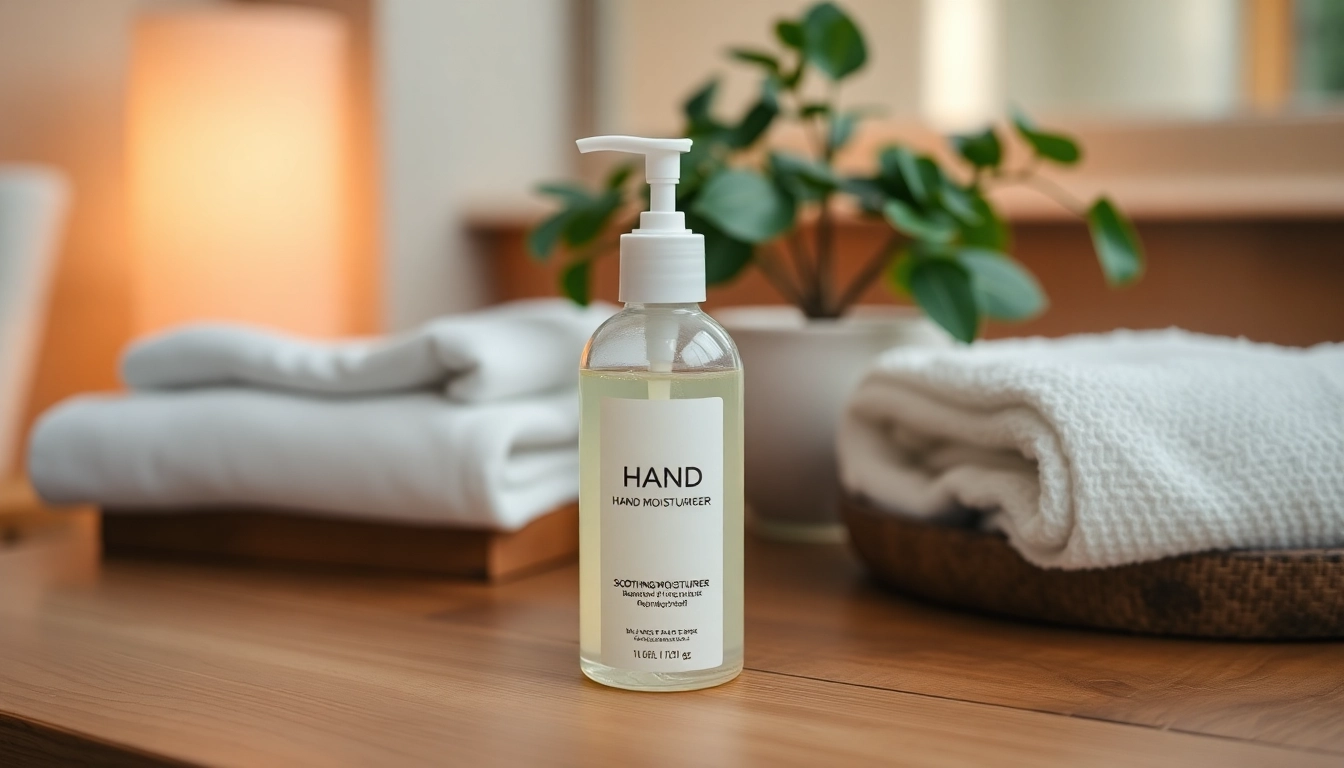Hand care is often overlooked in our daily skincare routines, yet it plays a crucial role in maintaining overall skin health. One of the most effective ways to ensure your hands remain soft, hydrated, and resilient is through the regular use of a hand moisturiser. In this comprehensive guide, we will explore the importance of hand moisturisers, the key ingredients to look for, application tips for maximum efficacy, DIY recipes, and how to evaluate the effectiveness of your chosen product. By the end of this article, you will have a thorough understanding of how to achieve and maintain soft, well-nourished hands.
Understanding the Importance of Hand Moisturiser
Why Moisturising Hands is Essential for Skin Health
The skin on our hands is thinner and more susceptible to damage compared to other parts of our body. It is often exposed to harsh environmental factors such as sun exposure, cold weather, and frequent washing, which can lead to dryness and irritation. Regular moisturisation helps to maintain the skin’s natural barrier, preventing moisture loss and protecting against environmental aggressors. Furthermore, hydrated skin is less prone to developing conditions like eczema, dermatitis, and cracks.
Common Skin Problems Addressed by Hand Moisturisers
Several common skin issues can be alleviated with the right hand moisturiser. These include:
- Dryness: A direct result of environmental stressors, dry hands can lead to cracks and discomfort.
- Cracking: Without adequate moisture, the skin can develop painful fissures, making hand movements difficult.
- Irritation: Frequent washing, especially with harsh soaps, can strip the skin of its natural oils.
- Ageing Signs: Wrinkles and age spots can be mitigated by consistent hydration, helping to maintain a youthful appearance.
Choosing the Right Hand Moisturiser for Your Skin Type
Determining the best hand moisturiser for your skin type is vital for effective care. For oily skin types, lightweight, gel-based formulations that absorb quickly without leaving a greasy residue are ideal. Conversely, dry skin types may benefit from thicker, cream-based moisturisers that offer deeper hydration and nourishment. Combination skin can often find relief with lotions that balance moisture and oil levels. Lastly, individuals with sensitive skin should opt for fragrance-free, hypoallergenic options to prevent irritation.
Key Ingredients to Look for in Hand Moisturisers
Natural vs Synthetic: What You Should Know
When selecting a hand moisturiser, you’ll encounter both natural and synthetic ingredients. Natural ingredients, such as shea butter, jojoba oil, and aloe vera, offer skin-nourishing properties without the risk of harsh chemical reactions. Conversely, synthetic ingredients, such as silicones and emulsifiers, can enhance texture and longevity. Understanding the benefits and potential drawbacks of each can help you make an informed choice. If you are aiming for a more organic skincare approach, lean towards products with natural formulations.
Hydrating Agents: Glycerin, Hyaluronic Acid, and More
Several key hydrating agents should be included in your hand moisturiser for maximum efficacy:
- Glycerin: A humectant that draws moisture into the skin, making it an excellent addition for hydration.
- Hyaluronic Acid: Known for its ability to hold up to 1,000 times its weight in water, it promotes deep hydration.
- Natural Oils: Oils like coconut, almond, and olive are rich in fatty acids, providing both hydration and a protective barrier.
Understanding Fragrances and Preservatives
While fragrances may enhance the sensory experience of using a hand moisturiser, they can sometimes lead to skin irritation, particularly for those with sensitive skin. Products that are fragrance-free or use natural scents from essential oils can be safer options. Preservatives are necessary for preventing microbial growth, but opting for products with gentle preservatives can minimize the risk of irritation.
Application Tips for Maximum Efficacy
When and How to Apply Hand Moisturiser
For optimal results, apply hand moisturiser after washing your hands or whenever your skin feels dry. Use a generous amount and rub it between your palms and then spread it evenly across each finger and the back of your hands. Don’t forget to massage the cream into your cuticles to keep them hydrated as well.
The Role of Massage in Effective Moisturising
Incorporating a brief massage into your moisturising routine can significantly boost circulation and improve absorption. Use circular motions, applying gentle pressure to stimulate blood flow and allow the product to penetrate better into the skin.
Storing Your Hand Moisturiser for Optimal Use
Proper storage of your hand moisturiser is crucial to maintaining its efficacy. Keep it in a cool, dry place away from direct sunlight. If you frequently travel, consider using smaller, travel-sized containers to ensure you always have access to hydration when needed.
DIY Hand Moisturiser Recipes to Try at Home
Simple Recipes Using Common Ingredients
Creating your own hand moisturiser can be fun and offers the advantage of knowing exactly what you’re putting on your skin. Here are a few simple recipes using common ingredients:
- Coconut Oil and Sugar Scrub: Mix equal parts of coconut oil and sugar. Use this scrub to exfoliate and moisturise hands simultaneously.
- Aloe Vera Gel and Olive Oil: Combine 2 tablespoons of aloe vera gel with 1 tablespoon of olive oil. This mixture hydrates deeply and is perfect for sensitive skin.
- Shea Butter Cream: Melt 1/2 cup of shea butter and mix with 1/4 cup of beeswax and 1/4 cup of almond oil. Allow it to cool before applying.
Customizing Your Hand Moisturiser for Specific Needs
Feel free to customize your DIY recipes by adding essential oils like lavender for relaxation or tea tree oil for its antibacterial properties. Just a few drops can enhance the benefits of your hand moisturiser while providing a delightful scent.
Storage and Shelf-Life Considerations
Your homemade hand moisturisers can typically last between 6 to 12 months, depending on the ingredients used. Store them in airtight containers to minimize exposure to air and contamination, and consider labeling each container with the date of creation, so you know when to use it by.
Evaluating the Effectiveness of Your Hand Moisturiser
Signs of a Quality Hand Moisturiser
A quality hand moisturiser will absorb quickly without leaving a greasy finish. Your skin should feel soft and hydrated immediately after application, and over time, you should notice improvements in skin texture and overall resilience. Look for products that are dermatologically tested and enriched with beneficial ingredients.
Monitoring Skin Changes Over Time
Tracking the effects of your hand moisturiser is essential to ensure it meets your needs. Take note of any changes in your skin’s condition, such as increased hydration, reduced irritation, or improved elasticity. Keeping a skincare journal can help you identify trends and determine whether the product continues to work effectively for you.
When to Switch Products or Formulations
If you notice persistent dryness or irritation despite regular use of a hand moisturiser, it may be time to reassess your choice. Consider switching to a product with a different formulation or key ingredients tailored to your skin’s specific needs. Always patch-test new products prior to full application to minimize the risk of adverse reactions.



